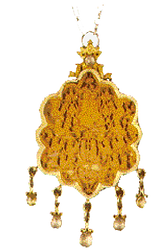East of Hania and at a distance of barely 6 km, following the road towards the International airport, is Akrotiri (in the past it was called Kiamon and Melecha Peninsula), which is between the gulf of Hania and that of Souda. First stop in the journey on the outskirts of the town, we can see the church of the Prophet Elias with the graves of Eleftherios and Sophocles Venizelos. We wholeheartedly recommend this site where you can enjoy a magical sunset and a wonderful view of the entire town of Hania.
Monasteries of the Area
St. Triada TzangarolonThis is a majestic monastery with a cross-shaped-well and a beautiful front view in a wonderful landscape overgrown with olive groves and cypress trees. It is said that two orthodox monks named Lavrendios and Jeremias, of the Venetian orthodox family of Tzangarolon founded it in 1612. In the middle of the monastery, we see a dome-like cross-shaped temple, consecrated to St Triada with the chapels of Zoodohos Piyi and St. John Theologos. An avenue lined with cypress trees leads to the central gate of the monastery. On the main entrance ceiling is supported by columns of Ionic and Corinthian style and there is a Greek inscription “There was and there was and there was. But in there was there is and there will be Light, and Light, and Light, But in Light one God really (1631)”as well as on the frieze in the entrance are the Greek letters B Γ Y Θ T Π that mean (Depth, Knowledge, Supreme God, Tripartite Almighty Being).
The steeple that dominates the front view of the monastery was built in 1864. The icons of the Savior, Virgin Mary, St John the Baptist, Prophet Elias, the Presentation and St Triada, have been painted by the well-known hagiograph from Santorini, Mercurius.
Monastery Gouvernetou
Continuing northwards, after the monastery of St Triada, we come to the monastery of Gouvernetou, that was built in honour of the Virgin Mary. That is why it is called Lady of the Angels, but it is known as the Monastery of St John the Hermit and is celebrated officially on October the 7th. The fortified enclosure of the monastery has the shape of a parallelogram 40-50 m., with four square towers at the corners with caditoie, namely special portholes of defensive character. In the middle of the enclosure, there is a vaulted temple whose front facade is decorated with a Venetian sculpture. On the western side there is the vestibule with two chapels; one consecrated to St John the Hermit and the other to the Agia Deka (St Ten). Behind the chapel, there is the cemetery with the chapel of St Prokopios. On the northern side, there is a big reservoir, from which the monastery is irrigated. Judging from the decoration, the date of the monastery must be placed around the first years of Venetian domination.
Katholiko
At a small distance north of the monastery Gouvernetou, in the heart of a wild and majestic ravine, following a small path, we come to the monastery of St John the Hermit or Xenos, better known by the name Katholiko. The monastery has been uninhabited for many centuries. The church of St John the Xenos (6x4 m.) is carved in rock and only the western facade is built. In the courtyard there are cells and on the abrupt slope crypts, where hermits used to spend frugal days. Two cells are so low that only by creeping in can one enter them. It is believed that it is the first monastery built in Crete, in the 6th and 7th centuries. West of the monastery there is the entrance to a cave, in which the founder of the monastery St John the Xenos lived and died. At the front of the entrance of the cave, there is a natural reservoir of water that is believed to be holy. Inside the cave, there is the place where the Saint passed away. One can enter the cave but in certain parts but the passage is very difficult.
Monastery of St. John the Charitable.
A beautiful monastery situated in Pazinos. Administratively it belongs to the Monastery of Ag. Triada it was built approximately in 1460 and is probably a Catholic monastery, which explains its different architecture.
The main villages
Kounoupithiana, Ag. Onoufrios, Plakoures, Kabani, Kathiana, Kalathas, Horafakia, Stavros, Korakies, Pithari, Aroni, Sternes, Mouzouras, Chordaki, Pazinos, Kalorouma.
Beaches
There are many beautiful beaches in the area of Akrotiri. On the eastern side there are the beaches of Loutraki, Sosorides and Marathi, where the ruins of the ancient town Minoa are. Opposite Marathi, there is a small island that you can easily swim to and enjoy peaceful, romantic moments. You can reach this area by car or by bus, following the road towards the international airport that is 16 km from Hania. On the western side of Akrotiri there are the beaches of Kalathas (opposite Kalathas there is a small island that you can easily swim to) Tersanas, Maherida, the main beach of Stavros (east), the big west sandy beach of Stavros and the small bay of Blue Beach.
Caves
There are many very beautiful and interesting caves in the area of Akrotiri, especially on the eastern side. They are:
• Koumarospilios, 4 km. east from the church of the Holy Trinity (Agia Triada) with beautiful stalactites and stalagmites.
• Arkoudospilia or the Cave of the Bear, 500 meters from Gouverneto. There is a church at the entrance of the cave, which has as its roof the cave ceiling. At the center of the cave, there is a big rock, which resembles a bear, next to it, there is a water cistern and then there is another area that probably was an area for offerings as many objects of the 5th century BC have been found there. There are many stalagmites and some stalactites.
• The cave of Saint John the Hermit, just after Katholiko, a beautiful cave with amazing stalactites and stalagmites which you reach after a short walk overlooking the sea and the cliffs.
• Achirospilios, after Katholiko, with a natural beauty, filled with stalagmites, stalactites and columns.
• Nerospilia, to the northwest from Chordaki, with a cistern inside and beautiful natural designs from the dripping of the water.
• Neraidospilia, to the northeast of Mount Skloka with an interesting interior.
• Lera's cave, on Stavros Mountain (named after the chieftain Leras who resisted the Turks). There is a slightly inclining path that is easy to climb reaching an altitude of 410 meters, which leads to this beautiful cave that is filled with stalactites and stalagmites that are hundreds of years old.
• There are more equally interesting caves and you can get information from the Mountaineering Club.
Flora & Fauna
Akrotiri is full of aromatic herbs (thyme, dittany) and wild grasses. There are beautiful sand lilies on the beaches of Kalathas and Stavros, as well as in gardens of homes, as sand reaches beyond the road of Stavros. Don't cut them, they live only for a few hours in a vase.
• Macherida Lake, after Tersanas, which is also a wildlife sanctuary.
• Kalathorema, the small gorge in Kalathas, which begins almost on the beach of Kalathas and leads to Kabani and then Vothona, and is full of pine trees and wild herbs.
- The beautiful gorge "stou agiou to avlaki". Steep cliffs lead to the sea after a half-hour walk, where there is a small, neglected shipyard of the monks by the clear waters.
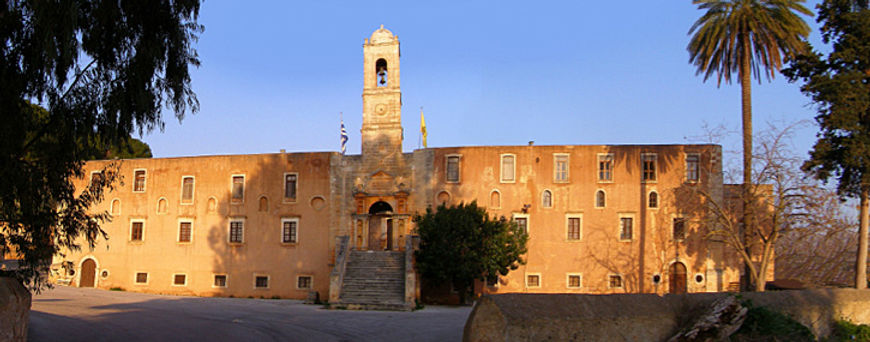
Akrotiri
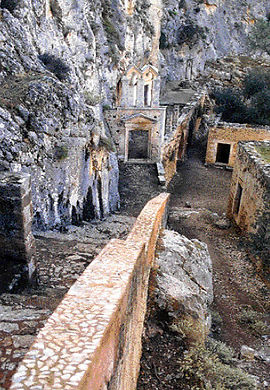
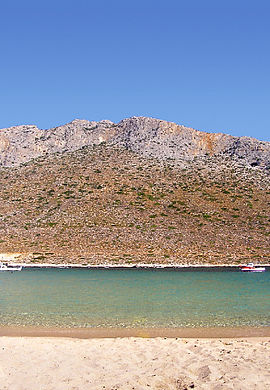


Marathi, Akrotiri, tel: +3028210 63337 cell phone 6973738574

Marathi, Akrotiri, tel: +3028210 63337 cell phone 6973738574
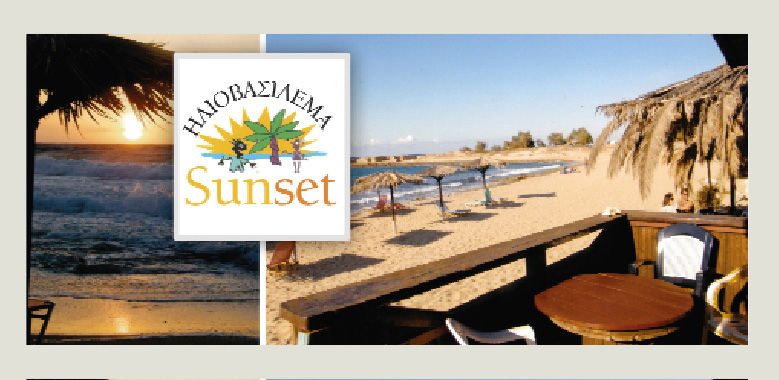
Stavros, Akrotiri, tel: +30 28210-39780 Open all day from the beginning of April until the end of October. Winter opening days: Friday, Saturday, Sunday. West of the main beach of Stavros, there is a beach that is different from the others, as it opens up to the ocean and is bordered by a sandy beach of shells, all forming a very unique landscape, especially at sunset. Also special is the restaurant-canteen that serves delicious appetizers, prime Cretan meals, but also excellent

Stavros, Akrotiri, tel: +30 28210-39780 Open all day from the beginning of April until the end of October. Winter opening days: Friday, Saturday, Sunday. West of the main beach of Stavros, there is a beach that is different from the others, as it opens up to the ocean and is bordered by a sandy beach of shells, all forming a very unique landscape, especially at sunset. Also special is the restaurant-canteen that serves delicious appetizers, prime Cretan meals, but also excellent
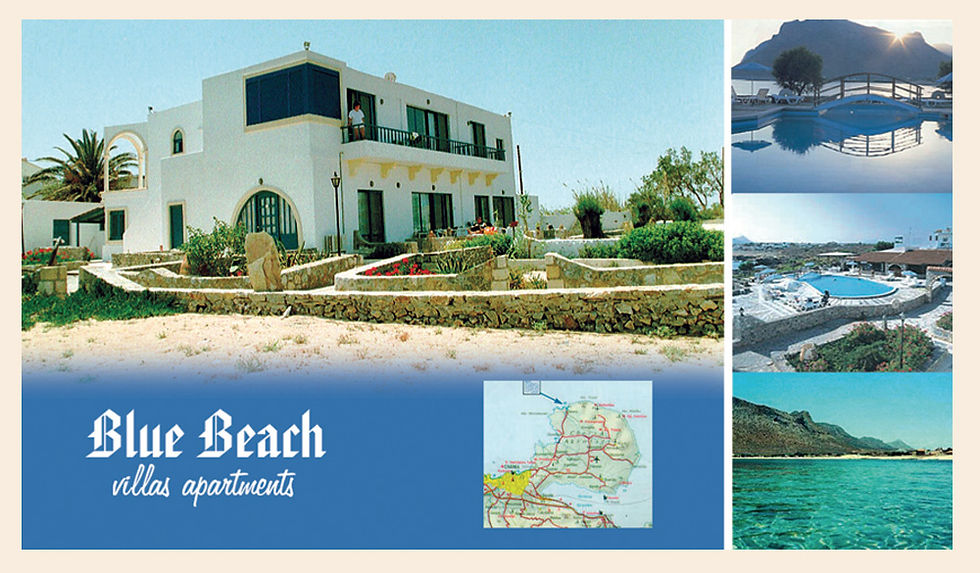
Stavros Akrotiri, tel: +302821039404, +302821039405, fax: +302821039406. Open from 1/4 -31/10 www.bluebeach-villas.com www. bluebeach.eu www.interkriti.net/hοtel/akrotiri/bluebeach email: vepe@cha.fortnet.gr Main Office: Hania, 7, Akrotiriou str., tel: +302821045077, +302821055534, +302821054890, fax: +302821044767. Open 1/11 - 30/4 for reservations/ informations. Situated at the west side of Stavros, right οn the beach, only 15 away from Hania. Villas & Apartment

Stavros Akrotiri, tel: +302821039404, +302821039405, fax: +302821039406. Open from 1/4 -31/10 www.bluebeach-villas.com www. bluebeach.eu www.interkriti.net/hοtel/akrotiri/bluebeach email: vepe@cha.fortnet.gr Main Office: Hania, 7, Akrotiriou str., tel: +302821045077, +302821055534, +302821054890, fax: +302821044767. Open 1/11 - 30/4 for reservations/ informations. Situated at the west side of Stavros, right οn the beach, only 15 away from Hania. Villas & Apartment

tel:+302821052525-39010-11, fax: +302821042616, www.hotel-zorbas.gr www.hotel-zorbas.gr e-mail: zorbasapt@grecian.net Open all year round. Located. right by the sea, away from traffic and noises, ideal for families. Studios & Apartments, all ground-floor, with sea view & private balconies, designed in traditional style, with kitchenette, shower/wc, a/c, fire place, telephone, hairdryer, TV (optional), safe-deposit box. Luxurious sea water pool, children’s p

tel:+302821052525-39010-11, fax: +302821042616, www.hotel-zorbas.gr www.hotel-zorbas.gr e-mail: zorbasapt@grecian.net Open all year round. Located. right by the sea, away from traffic and noises, ideal for families. Studios & Apartments, all ground-floor, with sea view & private balconies, designed in traditional style, with kitchenette, shower/wc, a/c, fire place, telephone, hairdryer, TV (optional), safe-deposit box. Luxurious sea water pool, children’s p
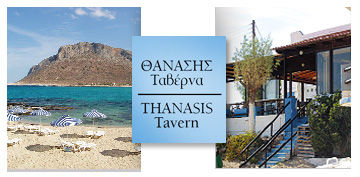
West coast bay of Stavros,a little further from the apts «Zorbas» tel.: +3028210 39110. Open: April-October. 8.00 a.m. to late night. Credit cards accepted. Magnificent panoramic view to Cretan Sea, as well as to the mountain of «the sleeping lady» or «the mummy» or Zorbas. Rich Greek breakfast, ouzovarieties with home taste, beetroot, sea food, and mezedes. The strong point of this old tavern (established since 1991), above the azure waters of the small bay with the golden coa

West coast bay of Stavros,a little further from the apts «Zorbas» tel.: +3028210 39110. Open: April-October. 8.00 a.m. to late night. Credit cards accepted. Magnificent panoramic view to Cretan Sea, as well as to the mountain of «the sleeping lady» or «the mummy» or Zorbas. Rich Greek breakfast, ouzovarieties with home taste, beetroot, sea food, and mezedes. The strong point of this old tavern (established since 1991), above the azure waters of the small bay with the golden coa
We Recoment
